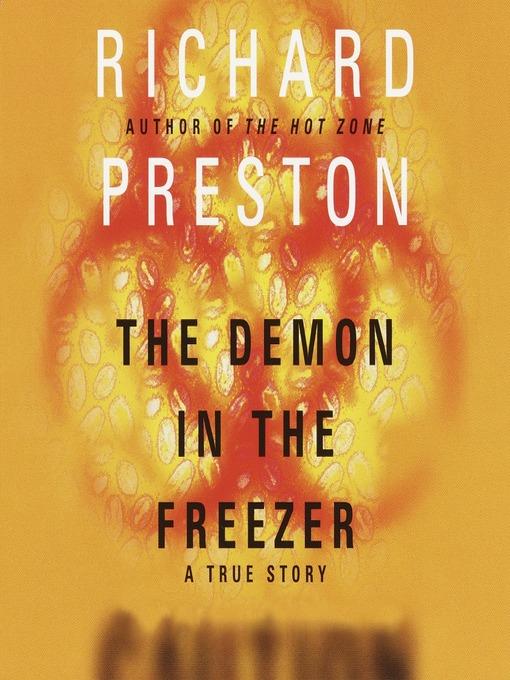
The Demon in the Freezer
A True Story
کتاب های مرتبط
- اطلاعات
- نقد و بررسی
- دیدگاه کاربران
نقد و بررسی

Although intended to satisfy the recent mania for information about terrorism, Preston's audiobook abounds with eclectic facts about smallpox (the demon) and other viruses that will interest readers with scientific curiosity. Paul Boehmer seizes the emotion of the moment as a scientist jabs a scissors blade through her protective glove into a finger right after he has told us that a single virus particle in her bloodstream would be fatal. His technical pronunciation is accurate and natural, although he repeatedly mispronounces smallpox's only enemy, vaccinia, the live virus used for vaccination. Preston has a knack for telling stories, and Boehmer turns them into a performance that captivates. J.A.H. (c) AudioFile 2003, Portland, Maine

Starred review from September 23, 2002
Never mind Ebola, the hemorrhagic disease that was the main subject of Preston's 1994 #1 bestseller, The Hot Zone
. What we really should be worrying about, explains Preston in this terrifying, cautionary new title, is smallpox, or variola. But wasn't that eradicated? many might ask, particularly older Americans who remember painful vaccinations and the resultant scars. Officially, yes, nods Preston, who devotes the first half of the book to the valorous attempt by an army of volunteers to wipe out the virus (an attempt initially sparked by '60s icon Ram Dass and his Indian guru) via strategic vaccination; in 1977 the last case of naturally occurring smallpox was documented in Somalia, and today the variola virus exists officially in only two storage depots, in Russia and at the Centers for Disease Control in Atlanta (in the freezer of the title). To believe that variola is not held elsewhere, however, is nonsense, argues Preston, who delves into the possibility that several nations, including Iraq and Russia, have recently worked or are currently working with smallpox as a biological weapon. The author devotes much space to the anthrax attacks of last fall, mostly to demonstrate how easily a devastating assault with smallpox could occur here. He includes an interview with Steven Hatfill, who has received much press coverage for the FBI's investigation of him regarding those attacks; his description of meeting Hatfill, hallmarked by a quick character sketch ("He was a vital, engaging man, with a sharp mind and a sense of humor.... He was heavy-set but looked fit, and he had dark blue eyes") is emblematic of what makes this New Yorker
regular's writing so gripping. Preston humanizes his science reportage by focusing on individuals—scientists, patients, physicians, government figures. That, and a flair for teasing out without overstatement the drama in his inherently compelling topics, plus a prose style that's simple and forceful, make this book as exciting as the best thrillers, yet scarier by far, for Preston's pages deal with clear, present and very real dangers.

























دیدگاه کاربران